Here are some of the books we connected to our experimental.
The Five People You Meet in Heaven by Mitch Albom
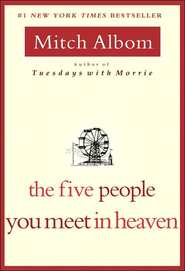
In this book, the main character, Eddie, dies in the very beginning. The rest of the book describes his journey in heaven. He meets five different people who have waited to explain how he affected their lives or how they affected his life. These five people explain his life to him and give him the chance to reflect on his life. The first person Eddie meets in heaven was the Blue Man. Eddie grew up at Ruby Pier, where his father worked. The Blue Man was part of a freak show, and he had died in a car accident. Eddie had run in front of the car to retrieve a baseball, and the man, though swerving, had gone into shock and gotten into another car accident. He taught Eddie that people die for other people, so that other may survive and prosper. While Eddie was in the war, he burned a mine shaft; suddenly, he saw some movement within the shaft, and he tried to save the person he saw in there. His fellow soldiers tried to get him to leave because there was to be a bombing in a few minutes. Eddie refused to leave, until the Captain shot him in the leg. When they were escaping, the Captain was killed by the explosion; had he left Eddie behind, the Captain would have lived. As Eddie's second person, he taught Eddie about sacrifice. The third person Eddie meets in heaven is Ruby, of Ruby's Pier. Ruby taught Eddie about his father and forgiveness. Eddie had a difficult relationship with his father, and he thought his father died after getting pneumonia (he had come home soaked with seawater after drinking). However, Ruby shows Eddie how his father died of pneumonia after saving his best friend who was drowning. Eddie learned to forgive his father. Marguerite, Eddie's deceased wife, is his fourth person. She teaches him that love can last through death and heaven, as it is stronger than all else. The last person is Tala, the girl in the mine shaft. She teaches him of his purpose, to save children. Even though he had killed her, he saved the little girl who was about to be injured by the ride at the pier on the day he died. This book teaches us about self-reflection as Eddie's journey through heaven helps him recount his life and its meaning. He learns how he affected others and the value of his life. He did not understand his true identity and purpose of life until his life was over.
The Giver by Lois Lowry
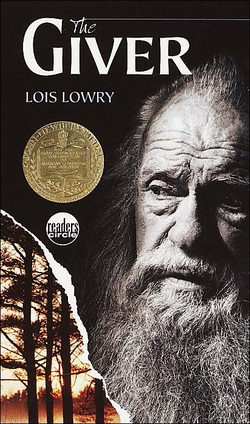
Jonas lives in a utopian society where everyone is equal. It reminded me of communism, with an overly controlling government and no freedom. The peope in this book, however, are deprived of knowledge. They do not see colors; they cannot choose partners; they cannot have sercrets. Every morning, the people in a "family" have to share their dreams with each other. Every night, they have to share their feelings of the day and talk them over. There is no privacy at all, and the people are robbed of the people they could have been. Their identities are stolen from them. Jonas, a member of the Community, receives a special job when the jobs are assigned: he is told he will succeed The Giver. The Giver, as Jonas learns over time, holds all of the memories of the community. These memories are memories of times past: snow, love, war, poverty, etc. They are all ladden with feelings: love, desperation, etc, that the Community cannot feel. There is one person who knows of the outside world where everyone could be an individual: The Giver. Jonas takes on this job, and the memories are transfered from The Giver to Jonas. Because the memories last forever, someone must always have the memories in order to keep the Community safe. They must do this for the good of the Community, while they alone suffer all of the extreme feelings of desperation and struggle; they have no one to comfort them because no one else can know about these memories. Jonas, throughout the book, learns what it is like to have an identity: to be able to keep memories and secrets, to have feelings, to see colors. Memories play a major role in identity formation, and as a growing boy, Jonas is forming his identity. The rest of the people in the book are simply robots who cannot express true emotions, as Jonas finds out. They have no secrets, no memories, and no idea of what they are missing in the area of individuality. Jonas' father kills babies who are not perfect. That is truly heartless, but he does not know any better. When Jonas and The Giver plan to send Jonas away, Jonas takes Gabe, a baby his family is taking care of because he is in risk of being "released", the term for killing. Jonas and Gabe cross the river, releasing the memories Jonas holds and giving them to the Community. The books ends without telling us how the Community deals with this and what happens to The Giver. All throughout the book, Jonas has to question what is important to him and who he is. The Giver helps him through the transition, and the memories help Jonas to realize what his life could be like. Eventually, it is implied that Jonas does know who he is, and after leaving the Community, the memories are released to help the people discover their own identities.
My Sister's Keeper by Jodi Piccoult
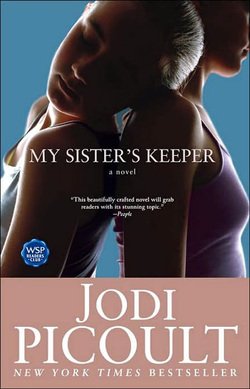
Kate and Anna Fitzgerald are sisters. They have an older brother, Jesse, and two parents, Sara and Brian. Kate was diagnosed with leukemia before Anna was born. When none of the other Fitzgeralds were perfect matches for a bone marrow transplant, Dr. Chance suggested that Sara and Brian have another child. They had Anna genetically engineered so that she was a perfect match. Anna has known for years that she was created for the purpose of keeping her sister alive, and she has gone through countless procedures and surgeries to save Kate. Anna hires a lawyer and files a lawsuit against her parents for the rights to her body, just after Kate's kidneys fail, and Anna is the only donor. This book jumps through time and jumps from each person's perspective. While the present time is the courtcase, the family jumps back into time to remember parts of the sisters' lives. We learn that Jesse has gotten into a lot of trouble with the school and the law because he is angry that he could not save Kate. Anna wants to be seen as separate from her sister, as an individual. Her whole life, she had to view herself as her sister's donor. She felt that her only purpose in the world was to save her sister. When Anna gets accepted into a hockey program, she is unable to attend because her family needs her at home in case Kate needs a donor. Anna's idenitty is her "Sister's Keeper", as the title implies. All she wants to be is her own individual person. Jesse and the rest of the family are also labeled as the family who has the dying sister/daughter. When people look at them, they see a cancer family, not just any other family. It must be difficult to be identified by someone you are not. Anna and the Fitzgerald family are identified by Kate, the sick child. They all just want to be their own people and seen as individuals.
"The Ugly Duckling" by Hans Christian Anderson
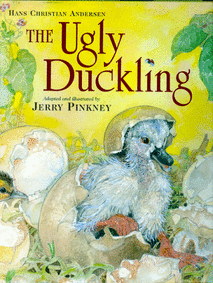
This fable tells the story of a mother duck whose eggs hatch. There is one egg that does not appear to be like the others and which she does not recall laying. This egg hatches a gray duck that is not as attractive as the other ducks. The ugly duckling is not like its brothers and sisters because it eats more than them, and there are other differences. The other ducklings do not treat it as a sibling, and its mother pities it. One day, the ugly duckling runs away from the farm and encounters many different animals. It constantly asks them if they have seen anyone like itself. Nobody has, and over time, the dukling continues to grow. Finally, the ugly duckling finds beautiful swans. At this point, the ugly duckling recognizes itself in the swans, discovering its true identity. While all of the ducks thought of the ugly duckling as an outsider who did not fit in and was ugly, the ugly duckling turned out to be more beautiful than its brothers and sisters. Because the swan/duckling was not born into the correct family, it was unaware of its true identity until it found the swans.
The Wind Singer by William Nicholson

Kestrel and Bowman are twins who live in the village of Aramanth. Their family lives in Orange District, which is not at the bottom of the social ladder, but it is close. Every member of the family is continually tested, and these results affect their family's status. Points can be added or deducted for honors or outburst, and all of the members of the family affect the family's status. For example, if one child acts out, points are deducted from the whole family, and if many points are deducted, the family could be forced to move into Grey District. In this system, there is no room for individuality or an identity. Although everyone's skills are tested, simple wrong-doings can drastically affect this. The people have little to no freedom, and in a system without freedom, there is little room for identity. Kestrel is rebellious against this system of examinations and points, and after she and Bowman forget their homework, they get demoted to a lower rank. Kestrel rebels against this system by purposefully sitting down in a lower rank than was necessary, and the teacher picks on her for the rest of class. Kestrel ends up running out of the school to the wind singer, a statue built by travelers. Years ago, the wind singer had a voice that sang and filled the people with joy. After the spirit-lord, Morah, became jealous and threatened to bring his terrible army of Zars to Aramanth, the emperor compromised by giving him the voice. After fighting against the system to save each other, Kestrel and Bowman have to run away. They decide to go find the voice of the wind singer after the emperor gives Kestrel a map. After a long journey with many strange people, Kestrel, Bowman, and their friend, Mumpo, reach the Halls of the Morah. After Kestrel takes the voice from Bowman, Bowman is hypnotized into becoming a Zar, but Kestrel is able to pull him out of it when he tries to kill her (he is unable to because she is his sister). By relating to his sister, Bowman is able to realize his true identity as a human, not a Zar. The Zars are soldiers with no regard for self-preservation. After being hypnotized, they follow the Morah's command and do whatever it takes to complete this goal, even sacrificing themselves. When Kestrel, Bowman, and Mumpo break the bridge so that the Zars cannot follow them, they then fall asleep. In the morning, they realize the Zars have kept walking, falling to their deaths, and all of the bodies began to create a bridge for the other Zars to walk on. Kestrel explains to Mumpo that they are willing to die for each other because they believe that they will live through each other. The Zars have no identity of their own if they live through each other. They are like mindless robots who follow a command and have no feelings, personalities, or consciences. Without the basics, how can they form an identity? In the hypnosis process, their identity is buried deep inside, and very few things can break this (Kestrel was one). Also during this journey, the three children meet the old children - people who are old in appearance and capabilities but look small. If one of them touches the three children, the the three children start to feel tired and turn old; this can be reversed, however. The old children, as we learn later, turn into the Zars by choice (but they do not understand what that entails), and they continue to be sadistic. The old children have a little bit more of an identity than the Zars do, but they still have no consciences and must have lost some of their identity in order to become old children. Eventually, the three successfully bring the voice back to the wind singer, and its singing stops the Zars. The people of Aramanth are then free from their system and are able to live with their own choices and create their own identities.
The Picture of Dorian Gray by Oscar Wilde
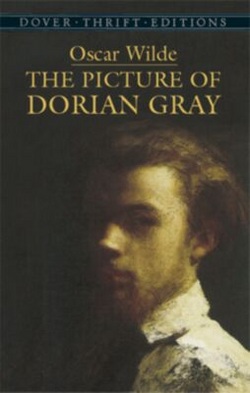
In The Picture of Dorian Gray, Dorian Gray wishes that he remains young and beautiful while a portrait painted of him ages. His wish is granted and his appearance remains unchanged for the next 18 years. Influenced by a friend, Dorian pursues a life of pleasure and satisfaction of the senses. The many sins he commits are bore by the painting in the form of scarring and aging. Dorian's hedonistic lifestyle does not bring him happiness however, and he realizes that the only way to absolve himself is through full confession. He decides to destroy the last remnants of his conscience and stabs the hideous painting of himself. He is later found dead, stabbed in the heart and aged. The portrait however, has gone back to its original form. In this book, Dorian's identity becomes a victim of his pursuit of worldly pleasures. His soul is scarred by the sins he commits. Even though there is no physical evidence of his crimes, he carries the burden of guilt. He knows that what he is doing is wrong but he never changes his ways because there are no consequences to his actions. The lack of repercussions can be very dangerous to a person's identity because he will continue making harmful decisions. Ultimately that person will, like Dorian Gray, grow to despise them self from regretting all of the sins that they have committed. The moral of this story is that pleasure does not necessarily lead to happiness. Although you can mask your emotions with a fake appearance, you cannot erase your past. Dorian's body did not age but his identity became tarnished and he could never forget the atrocities he was guilty of committing. This book is a reminder to us all that we can never be fully absolved from our wrongdoings because they leave permanent scars on the victims and on our souls.
"Little Red Riding Hood"
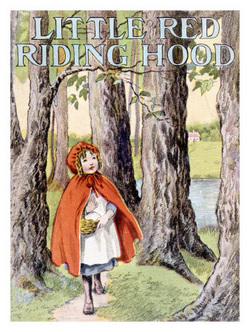
Little Red Riding Hood is a young girl who has been instructed by her mother to visit her grandmother and bring her lunch. She has also been told not to talk to strangers while she travels in the forrest. Little Red Riding Hood beings her trip to her grandmother's, wearing her red cloak (her "little red riding hood"). A wolf sees her coming and asks her where she is going. Contrary to what she promised to do, Little Red Riding Hood answers the wolf, explaining what she has to do. She then continues on her journey to her grandmother's house. Upon arrival, Little Red Riding Hood knocks on her grandmother's door, but nobody answers. She enters the house and goes to her grandmother's bed. "What great big eyes you have," she comments. "The better to see you with, my dear," the grandmother answers. Little Red Riding Hood points out other differences in her grandmother, such as big teeth and claws. Eventually, the wolf reveals himself, hiding in the grandmother's clothes. He plans to eat Little Red Riding Hood, but at the last minute, the grandmother comes out of the closet and saves her. The wolf was hiding behind the grandmother's clothes to reveal his true identity. Little Red Riding Hood knew her grandmother well enough to notice the changes, but she was unable to instantly recognize the wolf. It was wrong of the wolf to steal the grandmother's identity and trick her granddaughter into his trap.
Anthem by Ayn Rand

Equality lives in the future. In his world, everyone speaks of themself as "we". "I" is the Unspeakable word; Equality can remember a time where someone was being burned at the stake because he had spoken the Unspeakable word. Individualism is shunned, and the world is an overly controlled socialist society where everyone works for the good of the community. Equality is different. He begins to fall in love with a girl named Liberty. He also discovers the lightbulb. Over time, Equality learns exactly how controlling and afraid of progress his society is. They went backwards in time by only using candles and other technologies we would consider ancient. By starting over, they hoped to eliminate the corrupted and selfish society that we have today. However, they went too far. Nobody is allowed to make progress; nobody is allowed to understand individualism. Over time, Equality and Liberty run away and discover an old house that is equipped with our modern technology. Liberty spends the whole day staring at herself in the mirror, finally able to know what she looks like. Equality begins to read some classical literature and is fascinated with the concept of "I". After being robbed of having his own identity and individualism, he and Liberty are finally able to separate themselves from the group. They are able to have their own identities and recognize the "I" in themselves. We may consider the fact that Liberty spends the whole day in front of the mirror narcissistic, but it was not. She was deprived of knowing what she looked like for her whole life, and she was finally able to see what made her different from other people. When they were grouped in the "we", Equality and Liberty were barely any different from the other people in thier society. Now, with the discovery of the "I", the ability to express oneself separately from the group, Equality and Liberty can understand their identities.
The Boy in the Striped Pajamas by John Boyne
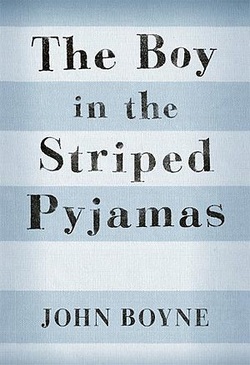
Bruno and his family have to move from their comfortable home in Germany to an isolated home. The whole story is told in Bruno's point of view, and, as a young boy, we are able to see the child's perspective of the course of events. Bruno's father is a Nazi soldier, and the book takes place during World War II. The place the family moves to is called "Out-With-It", which appears to be a strange name for the place. After spending time isolated in the house, Bruno decides to explore the area. He discovers a fence; there are people on the other side of the fence. Bruno finds a boy, Shmuel, who wears striped pajamas every day. Shmuel has the same birthday as Bruno, and the two become friends. He constantly asks Bruno if he has food, but Bruno can never understand why Shmuel is always hungry. Over time, Bruno learns some more about the people on the other side of the fence. One of them comes to serve the family. This man, Pavel, is a very nice man who helps Bruno when he is injured. He serves the family their meals, but as time passes by, Bruno notices that Pavel grows weaker and weaker. He spills wine at the dinner table, and he is punished harshly for his wrongdoing. Gretel later tells Bruno that the people in the striped pajamas are Jews and need to be kept separate. When Bruno's mother decides to move back to Berlin (which was where they were from), she takes the children with her. As their last adventure, Bruno slides under the fench to Shmuel and puts on an extra pair of striped pajamas. They go to search for Shmuel's missing father. The Nazis order them to go to the gas chambers, where the two friends die together. We later learn that the place was not called "Out-With-It" but Auschwitz. Bruno's family searches for him until a soldier finds his clothing by the fence, and his father pieces together how he had killed his son. During the Holocaust, the Jewish people were robbed of their identities and forced to be in a group, with no individuality. They all wore these striped pajamas that made them all look the same. It was because Bruno wore these striped pajamas and blended in easily with the rest of the victims that he was also sent to the gas chamber. There really is no visible difference between the Jewish boy, Shmuel, and the German boy, Bruno. The fact that he was killed in the Holocaust in which his father was participating shows exactly how the Nazis did not care for the identity of their prisoners.
Curious George by H.A. Rey

Curious George is a curious monkey who always has to investigate something. He lives with the Man in the Yellow Hat who found him in the jungle. Every time that the Man in the Yellow Hat leaves Curious George alone, he tells Curious George not to get into trouble, but George always does. "Curiosity killed the cat" describes how Curious George's curiosity always overpowers whatever the Man in the Yellow Hat told him to do. Curious George always really wants something or really needs to know something, and then people get angry at him for disrupting their work. In the end, the Man in the Yellow Hat always finds Curious George and solves the problem. Curious George is usually the only character in the book to have a name. Everyone else is identified by a noun, sometimes with an adjective: the Man in the Yellow Hat (although an important character, he does not have a name), the watchman, the sailor, and the thin man are a few examples. Little kids are able to identify with Curious George and his curiosity in these humorous books.
"Identity" by Cyrus Diaz
Look at me,
it's not my true identity
I have a covert identity,
i wonder if you'd ever see,
my thoughts, my deeds
are all that makes me
but something I may do
may not describe me.
My true identity
has fled me,
fled me to another
to my friends and family
my true identity
is all that makes me.
So lost deep inside
if its not for my soul
i would[d be lost again
my true identity
is hard to see.
Accept who you are
recognize your own beauty
identity isn't a need,
your identity should be your own
a better person you will be known
this is me, this is my identity
my true identity is all full of beauty.
it's not my true identity
I have a covert identity,
i wonder if you'd ever see,
my thoughts, my deeds
are all that makes me
but something I may do
may not describe me.
My true identity
has fled me,
fled me to another
to my friends and family
my true identity
is all that makes me.
So lost deep inside
if its not for my soul
i would[d be lost again
my true identity
is hard to see.
Accept who you are
recognize your own beauty
identity isn't a need,
your identity should be your own
a better person you will be known
this is me, this is my identity
my true identity is all full of beauty.
Explanation
For simplicity purposes, the narrator in this poem will be a "he". The narrator speaks of hidden identity. He has a "covert idenitty", meaning his identity is disguised. The narrator questions whether or not the "you" will ever see his true identity because he hides his true identity. He then continues to state that his true identity has left him to go to another person. While the reader knows that this cannot literally be true, it can have a figurative meaning. When other people around someone ask that person to change, they influence that person's identity. However, when this is taken to the extreme, that person loses their identity to the people around them. It also works the other way. If one is trying to mimick the people around oneself, then one begins to lose one's identity. This is because one loses oneself by abandoning one's identity (if one tries to absorb another identity, one's identity must go somewhere). The narrator continues by saying that his thoughts and deeds are what makes him different from other people. We know this is true because someone's deeds should reflect their personality, which should maintain sameness and continuity. The thoughts are what one says to oneself in one's head and therefore ara a raw, unfiltered illustration of what the person feels and what the person is like. Next, the narrator says that his soul is what makes his identity, which he keeps hidden from the outside world, intentionally or not. If the narrator is choosing to list what makes him different (his soul and his thoughts and deeds), then he is slowing allowing his identity to be taken away, first with the thoughts and deeds and then the soull. If he is saying that his thoughts and deeds are part of what constitute his soul, then the soul incorporates the mind, and all of this preserves the sameness and continuity onto which the man is trying to hold. The last stanza of the poem is a life lesson: the narrator instructs the reader to accept one's identity for what it is. The narrator tells the reader that identity should be individual; Then he concludes by saying that his identity is true and "full of beauty", meaning that he has learned to respect his identity despite fearing that he lost it earlier.
To see course literature, click here.
Works Cited
http://indiecitizen.files.wordpress.com/2008/05/mitch-albom-the-five-people-you-meet-in-heaven.jpg
http://famouspoetsandpoems.com/poets/walt_whitman/poems/17467
http://www.poemhunter.com/poem/identity-54/
http://3.bp.blogspot.com/_I-bvyBpij2c/TSuC5HNQrJI/AAAAAAAAAW4/eYMPvzF4ppI/s1600/ugly_duckling_lg.gif
http://www.jodipicoult.com/images/my-sisters-keeper-lg.jpg
http://img1.fantasticfiction.co.uk/images/n5/n25378.jpg
http://www.shockya.com/news/wp-content/uploads/little_red_riding_hood.jpg
http://photo.goodreads.com/books/1157143423l/667.jpg
http://www.theage.com.au/ffximage/2006/01/03/Pyjamas_060103092851541_wideweb__300x439.jpg
http://www.theage.com.au/ffximage/2006/01/03/Pyjamas_060103092851541_wideweb__300x439.jpg
http://blog.thefoundationstone.org/wp-content/uploads/2009/09/curious-george-movie.jpg
http://penpaperpad.com/wp-content/uploads/2011/01/The-Adventures-of-Huckleberry_Finn.jpg
http://blarghcritic.files.wordpress.com/2010/05/the-giver.jpg
http://images1.makefive.com/images/entertainment/books/best-books/the-picture-of-dorian-gray-7.jpg
http://en.wikipedia.org/wiki/The_Picture_of_Dorian_Gray
Wikipedia for book summaries
http://images.wikia.com/lostpedia/images/b/b6/Littleprince.jpg
http://bradpitt-information.com/wp-content/uploads/2009/04/the-odyssey.jpg
http://ivyjoy.com/fables/beetle.html
http://famouspoetsandpoems.com/poets/walt_whitman/poems/17467
http://www.poemhunter.com/poem/identity-54/
http://3.bp.blogspot.com/_I-bvyBpij2c/TSuC5HNQrJI/AAAAAAAAAW4/eYMPvzF4ppI/s1600/ugly_duckling_lg.gif
http://www.jodipicoult.com/images/my-sisters-keeper-lg.jpg
http://img1.fantasticfiction.co.uk/images/n5/n25378.jpg
http://www.shockya.com/news/wp-content/uploads/little_red_riding_hood.jpg
http://photo.goodreads.com/books/1157143423l/667.jpg
http://www.theage.com.au/ffximage/2006/01/03/Pyjamas_060103092851541_wideweb__300x439.jpg
http://www.theage.com.au/ffximage/2006/01/03/Pyjamas_060103092851541_wideweb__300x439.jpg
http://blog.thefoundationstone.org/wp-content/uploads/2009/09/curious-george-movie.jpg
http://penpaperpad.com/wp-content/uploads/2011/01/The-Adventures-of-Huckleberry_Finn.jpg
http://blarghcritic.files.wordpress.com/2010/05/the-giver.jpg
http://images1.makefive.com/images/entertainment/books/best-books/the-picture-of-dorian-gray-7.jpg
http://en.wikipedia.org/wiki/The_Picture_of_Dorian_Gray
Wikipedia for book summaries
http://images.wikia.com/lostpedia/images/b/b6/Littleprince.jpg
http://bradpitt-information.com/wp-content/uploads/2009/04/the-odyssey.jpg
http://ivyjoy.com/fables/beetle.html
